Description
Description :
-Believe in zero compromises
G-Premio BOND is a one-bottle universal bonding agent compatible with all etching modes.
- It can be used for direct bonding, but also for repair & hypersensitivity treatment.
- Moreover, GC wants to offer this ease of use and versatility without any impact on the quality of the bond.
G-Premio BOND offers the advantages of a universal, but with a top performance in all situations thanks to a unique combination of three functional monomers (4-MET, MDP, MDTP).
 Simplicity : 1 bottle and short procedure time
Simplicity : 1 bottle and short procedure time
![]() Ease of use : Touch cap bottle for easy dispensing
Ease of use : Touch cap bottle for easy dispensing
![]() Aim for zero discoloration : HEMA-free formulation prevents hydrolysis leading to discolorations.
Aim for zero discoloration : HEMA-free formulation prevents hydrolysis leading to discolorations.
![]() Attempt zero mistakes : Easy procedure with low technique sensitivity, G-Premio BOND offers a complete peace of mind during the procedure
Attempt zero mistakes : Easy procedure with low technique sensitivity, G-Premio BOND offers a complete peace of mind during the procedure
![]() Zero compromises on direct/indirect restorations : G-Premio BOND can be also used for luting and repairs as it displays high bond strength values not only on enamel and dentin but also on metal and Zirconia.
Zero compromises on direct/indirect restorations : G-Premio BOND can be also used for luting and repairs as it displays high bond strength values not only on enamel and dentin but also on metal and Zirconia.
Indication :
- Direct bonding of light-cured composites and compomers to tooth structure
- Bonding of dual-cure core build up composites to tooth structure, as long as these materials are light-cured
- Bonding of the dual-cured adhesive luting cement G-CEM LinkForce to tooth structure
- Intraoral repair of composite, metal-based and zirconia/alumina-based restorations
- Intraoral repair of ceramic restorations in combination with a silane coupling agent (like Ceramic Primer II)
- Treatment of hypersensitive teeth
- Sealing of tooth preparation (cavity or abutment) for indirect restorations
Video :

Clinical case :
Class IV restoration
Courtesy of Dr. Serhat Köken, Turkey
 Preparation .
Preparation .
 Selective etching of the enamel (5s) .
Selective etching of the enamel (5s) .
 Rinsing and drying .
Rinsing and drying .
 Dispensing G-Premio BOND .
Dispensing G-Premio BOND .
 Applying G-Premio BOND. Leaving it to react for 10s .
Applying G-Premio BOND. Leaving it to react for 10s .
 Drying 5s at MAX air pressure. Light-curing for 10s .
Drying 5s at MAX air pressure. Light-curing for 10s .
 Proceeding with composite placement .
Proceeding with composite placement .
 Final restoratior .
Final restoratior .
Frequently asked questions :
- What are the indications of G-Premio BOND?
G-Premio BOND Universal can be used for Direct Restorations, Repair of indirect restorations and Treatment of Hypersensitivity. Furthermore, it can be used for luting in combination with GC G-CEM LinkForce or G-CEM Veneer and for Core Build-up in combination with GC Gradia Core and G-Premio BOND DCA.
- Can G-Premio BOND be used with GRADIA CORE?
Yes, G-Premio BOND can and should be used with GRADIA CORE. In this case, G-Premio BOND should be mixed with its Dual Cure Activator to make it set even, especially in deeper areas
- Can G-Premio BOND be used with G-CEM LinkForce?
Yes, G-Premio BOND is part of the G-CEM LinkForce system. Its low film thickness contributes to a perfect adaptation of the prosthetic piece. If needed (e.g. for post luting), G-Premio BOND can be mixed with G-Premio BOND DCA to make it dual cure.
- What is the recommended etching mode?
All etching modes are possible and provide good performance. Selective etching of enamel is however particularly recommended, because it offers extra adhesion to enamel and reduce further the risk of over-etching and post-operative sensitivity on dentin
- How many drops are there in a bottle?
A bottle of G-Premio BOND contains 5 ml and 300 drops.
- What is the rationale of having a silicon cover on the bottle?
This silicon cover was designed to protect the liquid from the heat transmitted by dentist’s fingers and to avoid evaporation of the solvents. It also offers a better control on the quantity dispensed: it is very easy to dispense drop by drop, which ensures reduction of waste.
- Is it necessary to shake the bottle before use?
Yes, the bottle of G-Premio BOND should be shaken before use, to make sure all components are well mixed. Do not forget to close again the cap of the bottle immediately after dispensing.
- What is the working time of G-Premio BOND?
The working time of G-Premio BOND is 7 minutes from dispensing time, in its dedicated dish (5 minutes on a flat dish). This enables to use the product for multiple restorations on one patient, thus minimizing waste.
- How can G-Premio BOND achieve good bond strength values even with a very short application time?
Thanks to a new formulation, G-Premio BOND displays a faster dissolution of the smear layer and an improved infiltration. This enables the bonding agent to achieve sufficient bond strength to both enamel and dentin even with a very short application time, and regardless of the etching mode chosen.
- What is the film thickness of G-Premio BOND?
G-Premio BOND displays a very thin bonding layer of less than 5µm (around 3µm).
- How can it achieve such a thin film thickness?
G-Premio BOND displays a very thin layer thickness thanks to:
An excellent wettability, increasing the penetration of the adhesive in the collagen layer and thus diminishing the remaining thickness of the bonding layer
An efficient drying at maximum air pressure, helping to spread the bonding very well and evaporate all solvents
- What is the storage recommendation?
G-Premio BOND can be stored at room temperature (1-25°C); away from direct sunlight. If not in use for a prolonged period of time, it should be stored in the refrigerator.
- Does G-Premio BOND contain fillers?
Yes, G-Premio BOND contains silicon dioxide fillers homogeneously dispersed thanks to a proprietary GC technology. This helps to reinforce the bonding layer.
- Does it contain Bis-GMA, Bis-EMA or UDMA?
No, G-Premio BOND contains only dimethacrylates such as TEGDMA (same as G-ænial Bond).
- Which are the functional monomers of G-Premio BOND?
G-Premio Bond contains both MDP & 4-MET, as well as MDTP. This results in an improved adhesion to enamel & dentin (MDP and 4-MET), to zirconia, alumina and non-precious metals (MDP) & precious metals (MDTP).
- Why is it recommended to use a separate silane for repair of ceramics?
To bond to ceramics, a silane is always needed to achieve a stable bond. As G-Premio BOND does not contain silane, the use of a separate silane (eg. G-Multi PRIMER) is necessary prior to the application of the bonding agent.
When the bonding agent itself has silane inside, it simplifies the procedure but makes the bonding less stable. This can be seen in the bond strength after thermocycling, where this type of bond strength reduces after thermocycling.
So, an extra step is recommended to guarantee a stable and durable bond to ceramics.


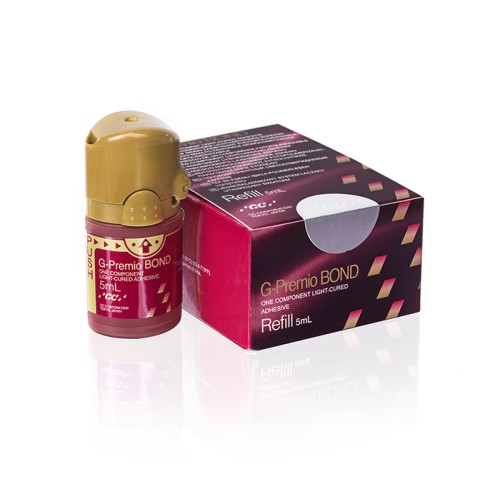
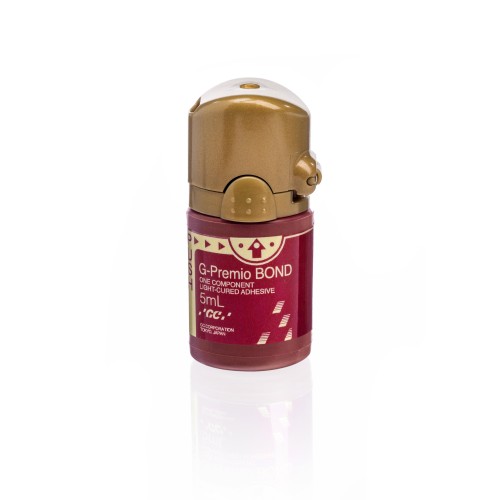
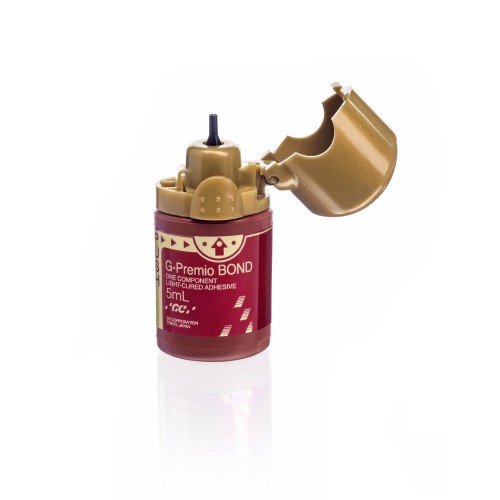
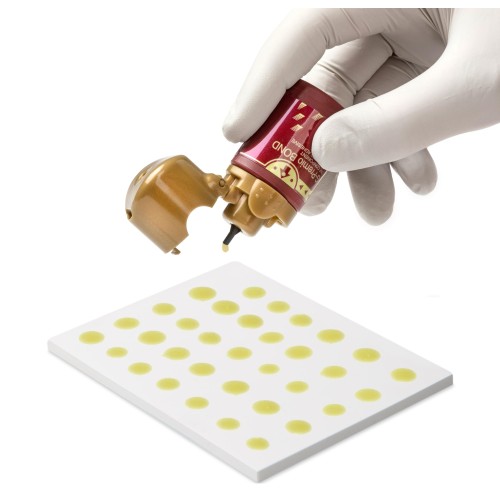
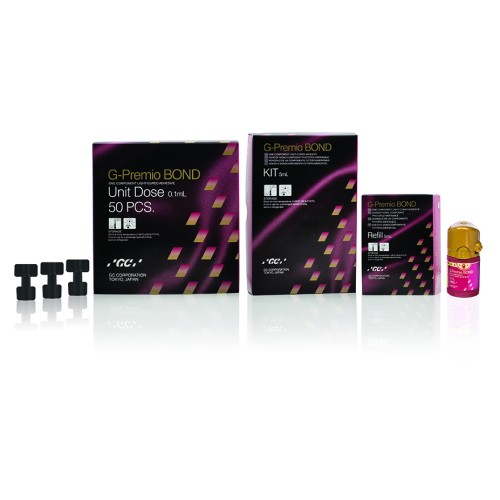
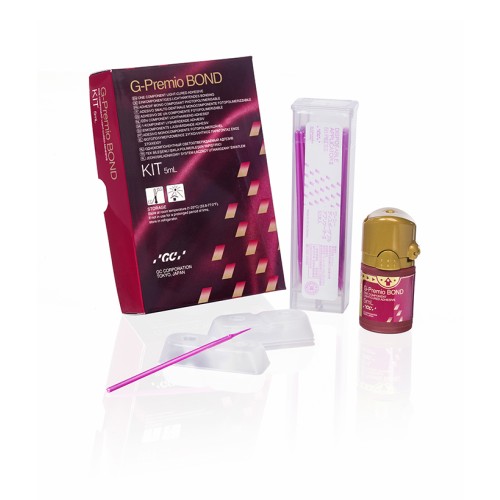

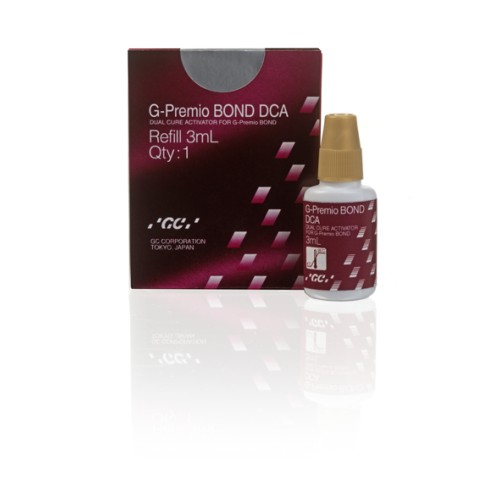
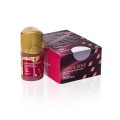


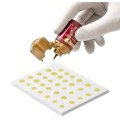
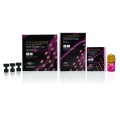
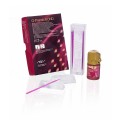
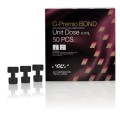
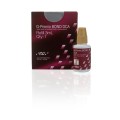

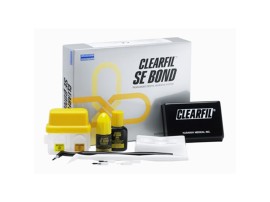
-thumb_270.jpg)
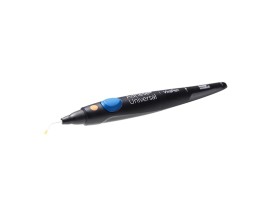
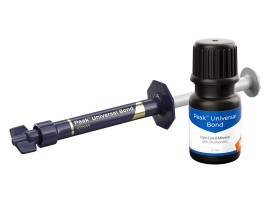
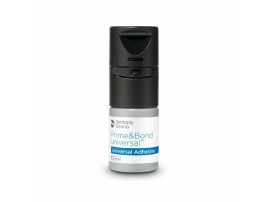
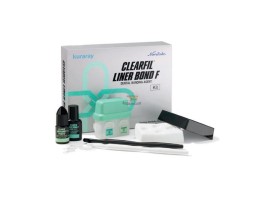
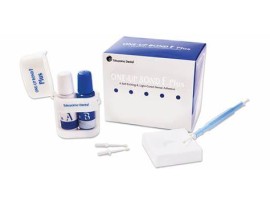
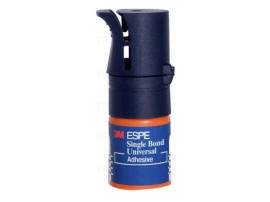
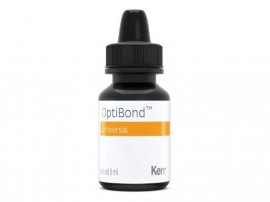
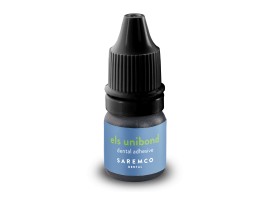
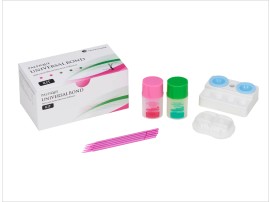



0 Review for “G-Premio BOND™ | One-Component Light-Cured Universal Adhesive”
5 Stars
0%
4 Stars
0%
3 Stars
0%
2 Stars
0%
1 Stars
0%